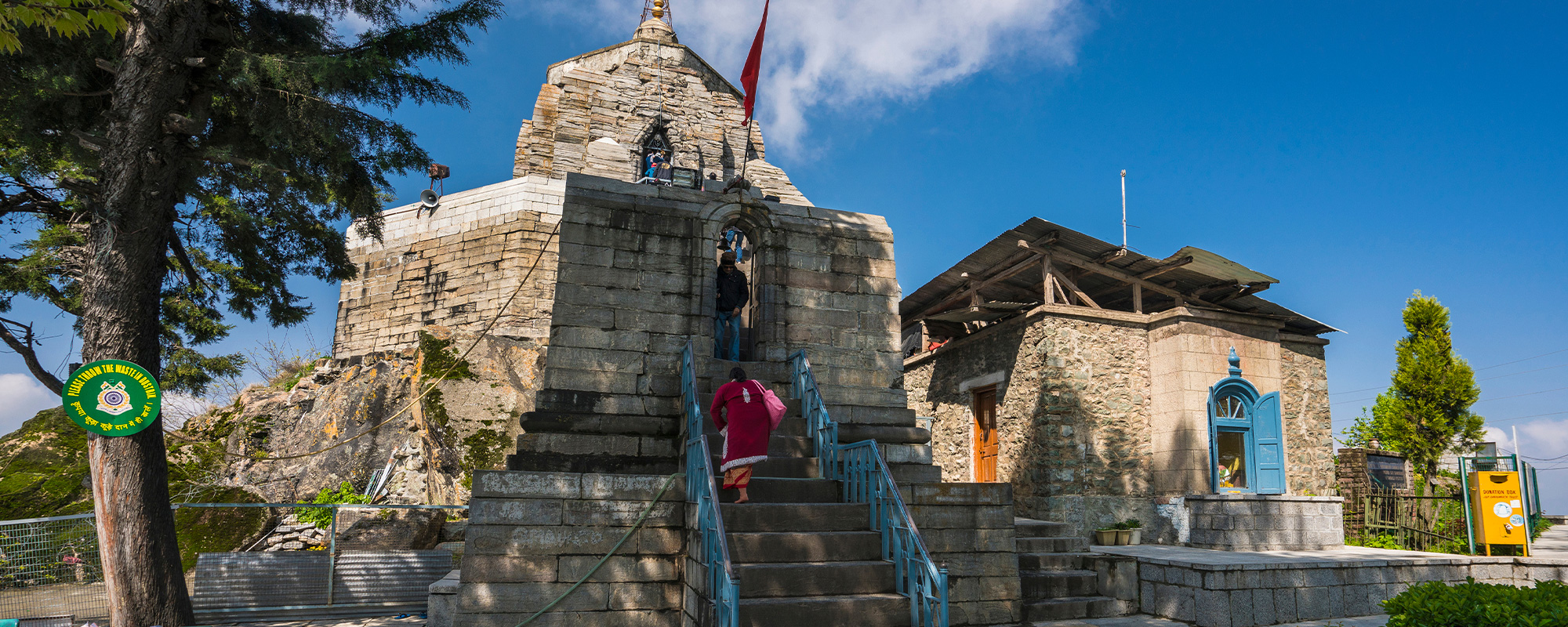There are certain places that are less about sightseeing and more about feeling. For me, the Shankaracharya Temple in Srinagar was one such stop. Perched on top of Shankaracharya Hill, high above the shimmering Dal Lake, this temple isn’t just about history or religion—it’s about the sense of calm it inspires. The climb may test your stamina, but once you’re up there, the views, the silence, and the aura of spirituality make it all worth it.
In this post, I want to share not just the facts about Shankaracharya Temple but also what it feels like to be there—what you should expect, little tips from my visit, and why I think this is one of the most underrated spiritual gems in India.
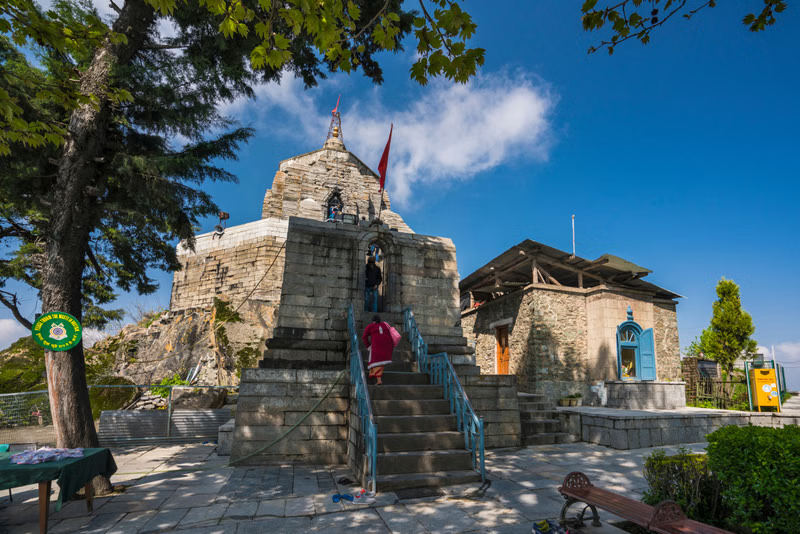
First Impressions: The Ascent to the Hill
Getting to the temple is a journey in itself. The temple sits at an altitude of about 1,000 feet above Srinagar, which means you’re looking at a fairly steep climb. You can drive most of the way up the hill, but the final stretch requires climbing around 200 steps.
I started my visit early in the morning. The air was crisp, the streets of Srinagar were still waking up, and the Dal Lake shimmered quietly in the soft light. As my cab wound its way up the zig-zagging road to Shankaracharya Hill, I kept catching glimpses of the city below—houseboats dotting the lake, shikaras gliding like brushstrokes, and the mountains forming a mighty backdrop.
The climb up the stairs is no joke. But here’s my tip: take your time. The steps are shaded by tall trees, and along the way, you’ll notice little pauses where you can turn back and take in the view. For me, those quick breaks weren’t just about catching my breath—they were about soaking in Srinagar from above.
A Glimpse of History
Standing atop Shankaracharya Hill, overlooking Dal Lake and the sprawl of Srinagar, the Shankaracharya Temple feels timeless. The moment I first climbed those ancient steps and touched the stone walls, I couldn’t help but wonder about the countless generations of pilgrims, travelers, and rulers who had walked the same path before me. The temple’s history is not just about architecture—it’s a living story that connects mythology, devotion, and centuries of cultural evolution in Kashmir.
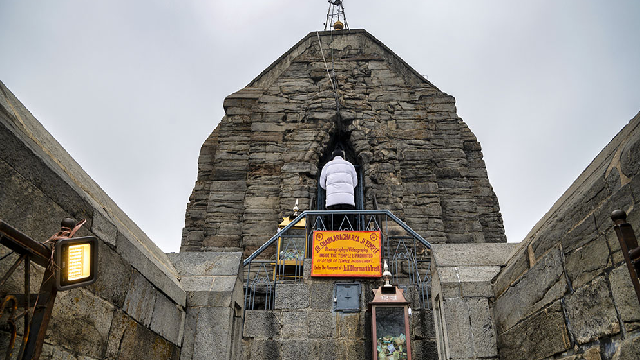
Ancient Roots and the Lingam of Shiva
The temple is dedicated to Lord Shiva, one of the principal deities of Hinduism, and the main sanctum houses a lingam that has been worshipped for centuries. Locals say the lingam itself is far older than the stone structure around it—an eternal presence that predates even written records.
Some historians suggest that the site was revered as early as 200 BC, when Kashmir was a flourishing center of Shaivism and Buddhist scholarship. What fascinated me was how the temple stands as proof of Kashmir’s layered identity—where mysticism, philosophy, and religion intertwined long before modern times.
The Adi Shankaracharya Connection
The temple draws its present name from Adi Shankaracharya, the 8th-century philosopher and reformer who traveled across India to revive Hinduism. According to tradition, Shankaracharya meditated on this very hill during his visit to Kashmir.
Standing inside the sanctum, I tried to imagine the young philosopher sitting here centuries ago, overlooking the vast valley, reflecting on the nature of existence. Whether or not every detail of the story is historically verifiable, the thought gave me goosebumps. It’s as if the temple still carries the vibrations of his meditative presence.
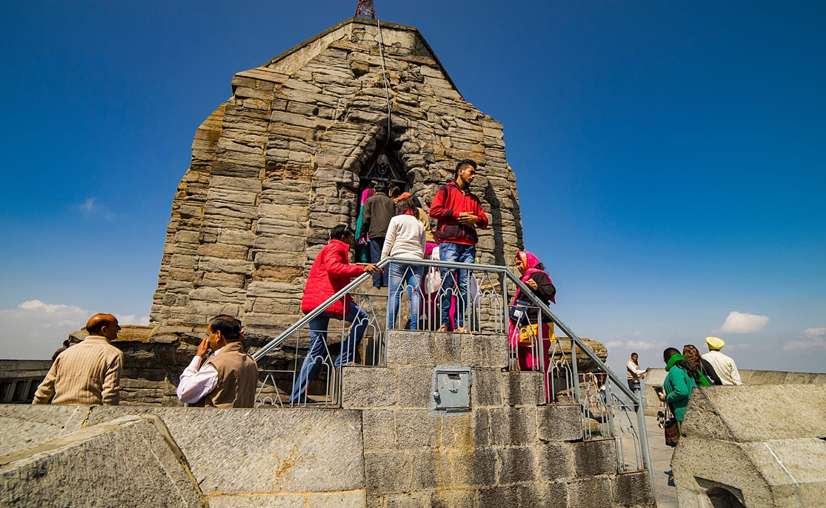
Dynasties and Rulers Who Left Their Mark
Over time, the temple saw attention from many rulers. It is believed to have been renovated during the rule of King Gopaditya in the 1st century BC. Later, rulers of different dynasties ensured its upkeep, adding layers of stonework and fortifications.
The temple’s hilltop position wasn’t just spiritual; it also had strategic importance. Some scholars argue that the hill served as a lookout post, with the temple doubling as both a sacred space and a sentinel. This dual role fascinated me—it reminded me how, in ancient times, religion and governance often went hand in hand.
The Persian and Mughal Influence
Kashmir has always been a crossroads of cultures. When I read accounts of the Persian influence during medieval times, I was surprised to learn that the hill on which the temple stands was once called Takht-i-Sulaiman (Throne of Solomon) by Persian scholars. For them, it symbolized wisdom and divine connection.
Later, under the Mughals, the temple still held its sacred status. While Islamic rulers brought their own art, architecture, and shrines to the valley, the coexistence of Shankaracharya Temple with Hazratbal Shrine and Jama Masjid reflects the spiritual inclusivity of Srinagar. Walking through the old city after my temple visit, I could see how these overlapping traditions shaped the city’s character.
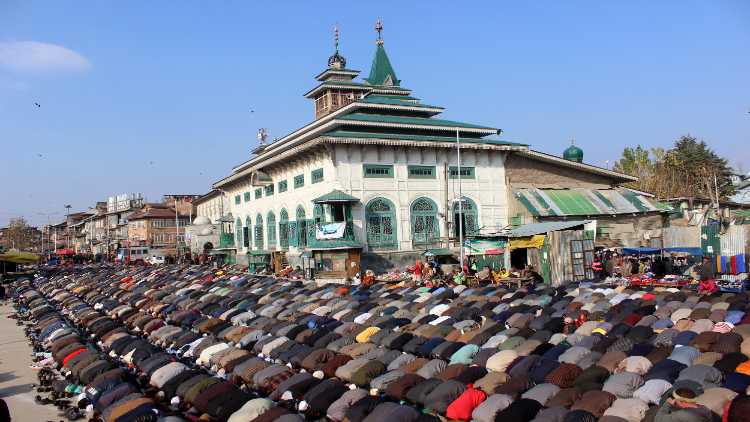
Sikh Era and Beyond
During the Sikh rule in the 19th century, Maharaja Ranjit Singh contributed to the temple’s upkeep. Some say he even had the lingam covered with a silver canopy as an offering of gratitude. For me, this was a reminder that devotion to sacred spaces often transcends political boundaries.
The Dogra rulers who followed also patronized the temple, ensuring that pilgrims could continue to climb up and worship. By then, Shankaracharya Temple had firmly become one of the must-visit spots on any Kashmiri spiritual circuit.
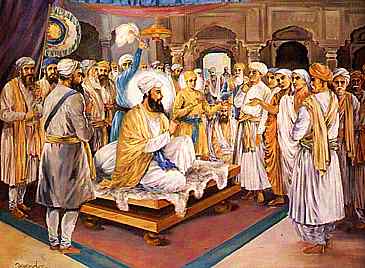
British Curiosity and Modern Recognition
When the British arrived in the 19th century, the temple caught the attention of explorers and archaeologists. Some of their travel writings describe the trek up the hill, the panoramic view, and the ancient vibe of the stone structure.
I smiled reading those old accounts because, in a way, their experiences mirrored mine. Even two hundred years later, visitors are awed by the same sights—the climb, the sanctum, and the view of Dal Lake shimmering below.
Today, the temple is not just a pilgrimage site but also an archaeological monument recognized for its cultural value. Yet, when you stand there, it doesn’t feel like a relic of the past. It feels alive, humming with energy.

Legends That Refuse to Fade
What makes Shankaracharya Temple’s history so fascinating is the blend of fact and legend. One story suggests that the hill itself was formed when Lord Shiva appeared to protect Kashmir. Another connects it with Solomon, linking it to Persian legends of wisdom. These myths, layered on top of history, make the temple more than stone and mortar—it’s a place where imagination and faith come alive.
As I listened to a local priest narrating some of these tales, I realized how powerful oral history is. Even if dates and details shift over time, the essence—the feeling of the divine anchored on this hill—remains constant.
Architecture That Speaks of the Past
The temple’s design is simple yet striking. Made of sturdy stone blocks, it reflects the ancient Kashmiri style of temple architecture. The steps leading up are steep but well-laid, a reminder of the endurance required to reach the divine.
What intrigued me was how minimalistic the sanctum is compared to the grandeur of other Indian temples. Perhaps that’s why it feels so intimate—there are no distractions, just you, the lingam, and the silence. In that stillness, you feel connected not just to Shiva but to everyone who has stood there before you.
Experiencing History as a Traveler
I believe history is not something you just read about—it’s something you experience when you’re present in places like this. As I stood outside the sanctum, watching pilgrims bow with folded hands, I realized I was part of a much longer chain. Generations had walked up these steps with hope, devotion, or curiosity, just like me.
In that sense, the temple’s history isn’t locked in the past—it continues to grow every time someone makes the climb and adds their own story.
Why History Matters Here
Why should you care about the history of Shankaracharya Temple when visiting? Because it deepens your experience. Knowing that Adi Shankaracharya meditated here, that Mughal scholars renamed the hill, that Sikh rulers offered silver to the lingam—it all adds layers of meaning to your visit.
You don’t just see a temple—you see a tapestry of cultures, faiths, and centuries interwoven into one hilltop shrine. And that, in my opinion, is what makes standing there so powerful.
Inside the Sanctum
Once you reach the top, you’re greeted by a modest stone structure—not grand or sprawling like many famous temples in India. But don’t let appearances fool you. The temple’s simplicity is what gives it its charm.
Inside, the sanctum houses a Shiva lingam, draped in offerings of flowers and surrounded by the fragrance of incense. There are no elaborate decorations, no overwhelming rituals—just a quiet, sacred space where the faithful bow their heads and visitors pause to reflect.
I remember sitting for a few minutes in silence after offering my prayers. No phones buzzing, no noise from the city below—just the hum of the wind and the occasional murmur of chants. Sometimes, it’s in the smallest, simplest temples that you feel the strongest connection.
The View That Takes Your Breath Away
If you ask me, one of the highlights of visiting Shankaracharya Temple is not just the temple itself but the 360-degree view of Srinagar from the hilltop.
From one side, you see the famous Dal Lake, dotted with colorful shikaras and lined with houseboats. On the other, the sprawling city of Srinagar stretches out with its charming old quarters and gardens. And beyond it all, the snow-capped peaks of the Himalayas stand tall, reminding you just how special this part of India is.
I spent nearly an hour just walking around the outer area, trying to take it all in. It felt like standing on a balcony over the Valley, with a view that stretched into infinity.
Practical Tips for Visiting
If you’re planning your trip to Shankaracharya Temple, here are a few practical tips that helped me and might make your visit smoother:
- Best Time to Visit: Early morning or late afternoon is ideal. The mornings are quiet, and the afternoons give you golden sunlight over Dal Lake.
- Seasonal Considerations: In winter, the steps can get slippery with snow, so wear good shoes. Spring and summer are perfect for clear views, while autumn adds a touch of golden charm.
- Entry Formalities: Since the temple is under the protection of security forces, expect a quick security check at the base. Cameras and phones are usually not allowed inside the temple premises.
- Clothing: Dress modestly as it’s a place of worship, and carry a light jacket even in summer—the wind at the top can be chilly.
- Footwear: You’ll need to remove your shoes before entering, so wear something easy to slip on and off.
The Spiritual Vibe
What makes Shankaracharya Temple stand out isn’t just its history or location—it’s the energy of the place. Whether you’re deeply spiritual or simply curious, the atmosphere here makes you pause.
Some devotees come to meditate where Shankaracharya once did. Others light incense, bow before the Shiva lingam, and leave quietly. Travelers like me, meanwhile, find themselves caught between devotion and admiration for nature. I remember thinking that this temple wasn’t just about reaching God—it was about realizing how small and yet how connected we all are in the larger scheme of things.
Combining the Visit with Other Attractions
One of the best things about visiting the Shankaracharya Temple is that it sits right in the heart of Srinagar’s most scenic belt. Once you’ve climbed those steps, soaked in the silence, and gazed at Dal Lake from above, the adventure doesn’t have to stop there. The temple is perfectly positioned for you to branch out and explore other gems of the city—each with its own story, vibe, and beauty.
When I visited, I planned my day in a way that I could experience both the spiritual calm of the temple and the vibrant, cultural, and natural side of Srinagar. If you’re like me and love mixing history with leisure, here are some places you can (and should) combine with your temple visit.
1. Dal Lake – The Icon of Srinagar
Let’s be honest—you can’t think of Srinagar without picturing Dal Lake. From the temple itself, you’ve already admired it from above, but nothing compares to being on the water.
A shikara ride is a must. I went right after my temple visit in the late morning when the sunlight sparkled across the water. Floating vendors came by selling saffron, Kashmiri jewelry, and even hot kahwa (spiced tea) in tiny cups. The whole experience felt like slipping into a painting.
Tip from my side: Go early in the morning if you want peace, or closer to sunset for magical golden skies. And don’t hesitate to chat with your shikara boatman—they have the most wonderful local stories to share.
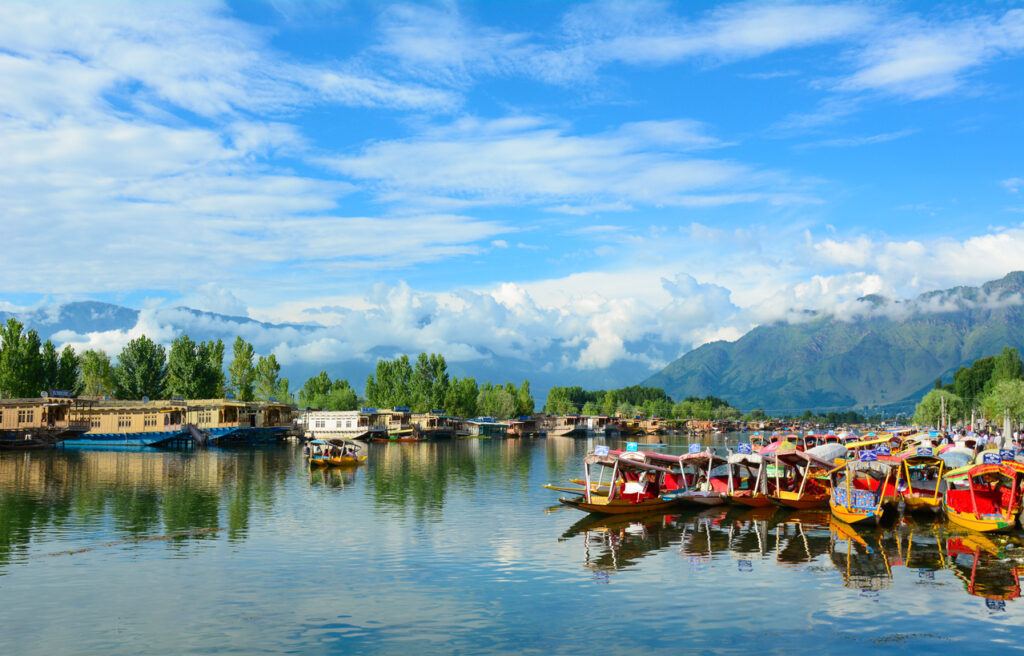
2. Mughal Gardens – Nishat and Shalimar
If Shankaracharya Temple feels like stepping into timeless spirituality, the Mughal Gardens feel like entering a slice of royal paradise. Nishat Bagh and Shalimar Bagh, both located along the banks of Dal Lake, are perfect companions to your temple trip.
Built during the Mughal era, these gardens are all about symmetry, terraced lawns, fountains, and rows of Chinar trees. Nishat Bagh, often called the “Garden of Joy,” offers stunning lake views, while Shalimar Bagh feels more royal and expansive.
I strolled through Nishat Bagh one afternoon, and what struck me most was how locals were enjoying picnics, kids running around, and couples just sitting under the shade. It’s not just history—it’s living heritage.
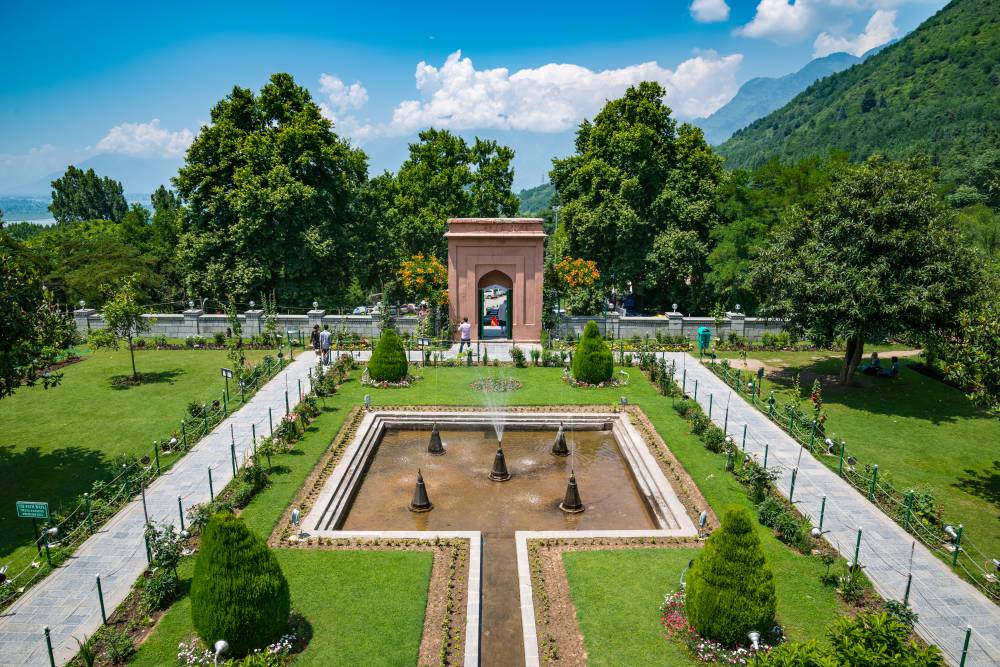
3. Hazratbal Shrine – A Different Kind of Devotion
After offering prayers at the Shankaracharya Temple, visiting the Hazratbal Shrine gave me a glimpse into the spiritual diversity of Srinagar. Located on the northern shore of Dal Lake, Hazratbal is one of the most revered mosques in Kashmir, housing a relic believed to be a strand of Prophet Muhammad’s hair.
The white marble structure glows beautifully against the backdrop of the lake and the mountains. I found the vibe here serene yet bustling, as worshippers came in for prayers while children played outside in the open courtyard.
It’s humbling to experience how different faiths coexist so beautifully in the Valley.
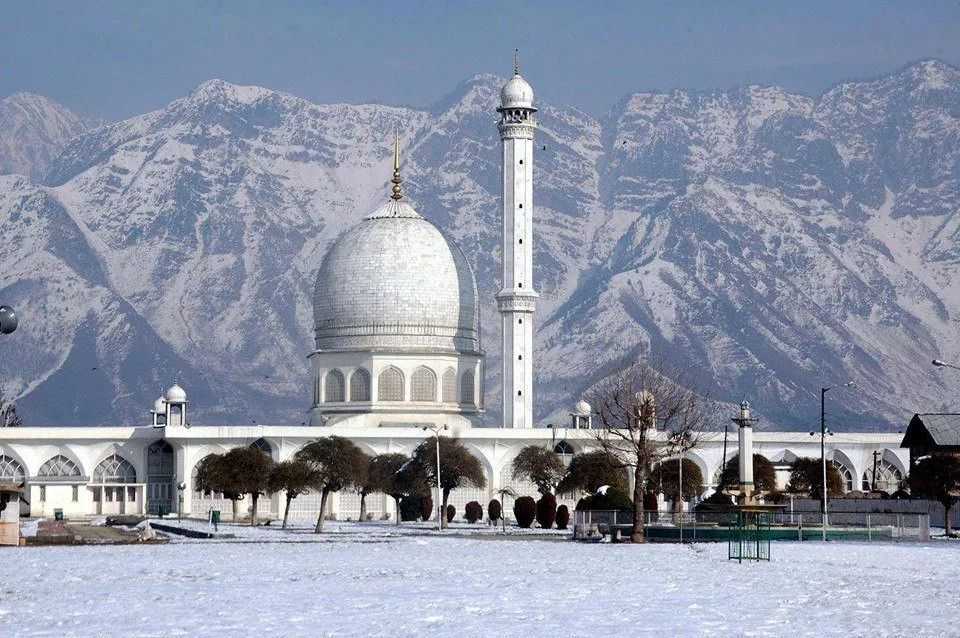
4. Pari Mahal – The “Palace of Fairies”
If you want more breathtaking views after Shankaracharya Temple, head to Pari Mahal, a historical monument perched above Srinagar. It’s an ancient seven-terraced garden built during the Mughal era, once used as an observatory and a retreat for Sufi scholars.
Walking through Pari Mahal felt like stepping into a secret hideaway. The terraces are lined with flowers, and from the top, you get yet another sweeping view of Dal Lake and the city.
I went during sunset, and I have to say—it was one of the most magical moments of my trip. The sky turned orange, the lake mirrored the colors, and the mountains slowly faded into silhouettes.
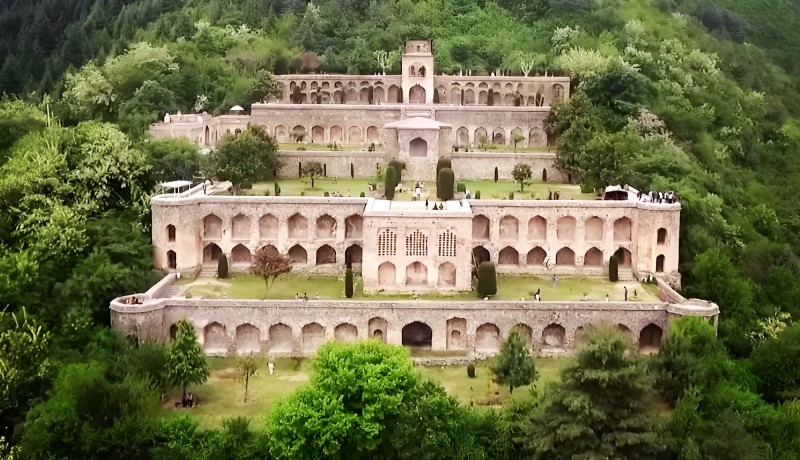
5. Tulip Garden – A Seasonal Bonus
If you’re lucky enough to visit Srinagar in spring (March–April), don’t miss the Indira Gandhi Memorial Tulip Garden. It’s Asia’s largest tulip garden, and when in bloom, it’s like walking through a rainbow.
From the temple, it’s just a short drive, so you can easily slot it into your day. I didn’t get to see it in full bloom, but I did catch the tail end—and even then, rows upon rows of colorful flowers stretching towards Dal Lake were a sight to remember.
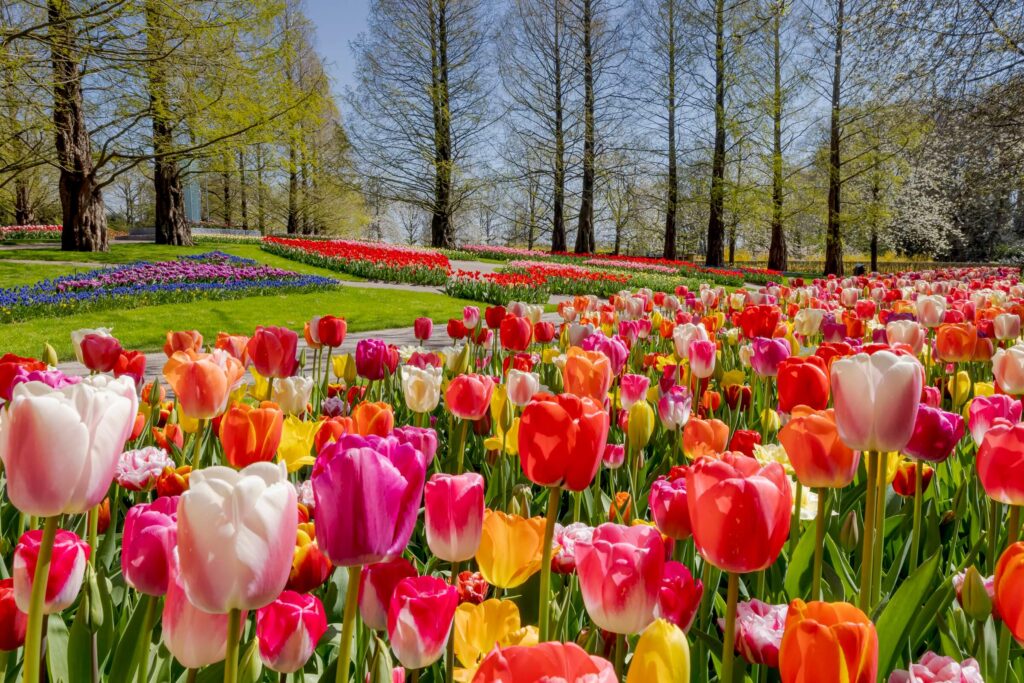
6. Old Srinagar – A Walk Through Time
For those who love exploring cities beyond the touristy spots, the old quarters of Srinagar are fascinating. After my temple visit, I wandered into the bustling lanes filled with spice shops, traditional bakeries selling Kashmiri bread, and woodcarving workshops.
One highlight here is the Jama Masjid, with its 378 wooden pillars and peaceful courtyard. Another is sampling local snacks—try “kulcha” bread with salty noon chai (pink tea). It’s an experience that ties together culture, history, and everyday life.
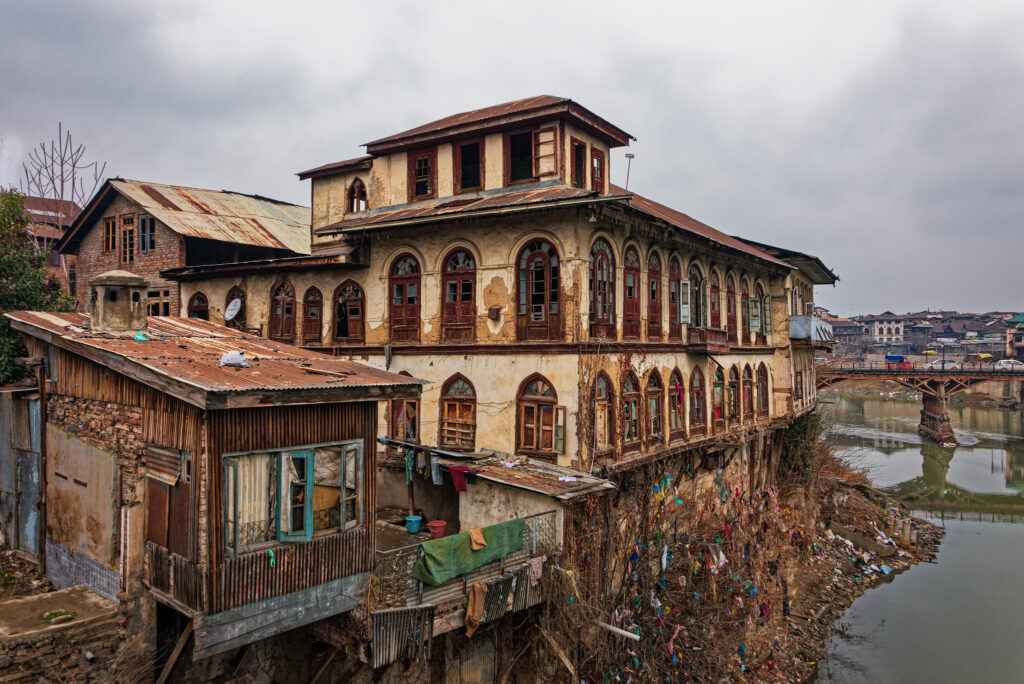
7. Nigeen Lake – Quieter Alternative
If Dal Lake feels too busy, head to Nigeen Lake, often called Dal’s quieter cousin. It’s just as scenic, but with fewer boats and less crowd. After the temple, this is a great spot to relax if you prefer peace over the buzz.
I stayed one night on a houseboat at Nigeen, and waking up to sunrise on the still water was unforgettable. You can also try kayaking here for a more active twist.
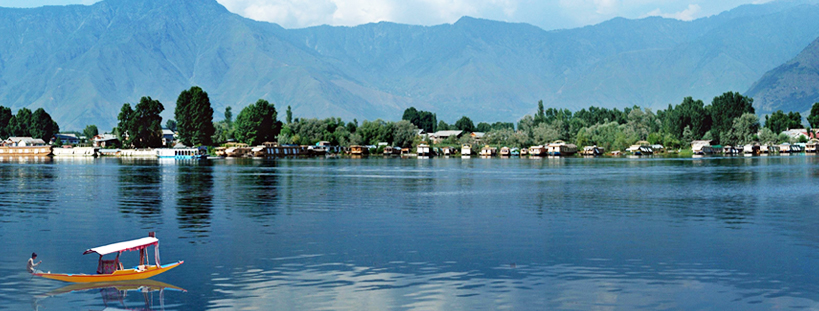
Personal Reflection: Why It’s Worth It
Looking back, my day at Shankaracharya Temple felt less like ticking a tourist box and more like taking a pause. In Srinagar, where beauty often overwhelms you—be it the lakes, gardens, or mountains—the temple gave me space to just be.
Climbing those steps, offering a simple prayer, and then watching the city below—it reminded me that travel isn’t just about places, it’s about perspective. Sometimes you need to climb a little higher, sweat a little, and slow down to truly see where you are.
FAQs
Q1. Where is Shankaracharya Temple located?
It is located on Shankaracharya Hill, overlooking Srinagar and Dal Lake in Jammu & Kashmir.
Q2. Who built the Shankaracharya Temple?
The temple dates back to the 9th century and is believed to have been renovated by King Gopaditya and later by Dogra rulers.
Q3. Which deity is worshipped at the temple?
The temple is dedicated to Lord Shiva.
Q4. Why is it called Shankaracharya Temple?
It is named after Adi Shankaracharya, the great Hindu philosopher who is said to have meditated here.
Q5. What is the significance of this temple?
It is one of the oldest temples in Kashmir and an important pilgrimage spot, also part of the Amarnath Yatra.
Q6. What are the temple timings?
The temple usually opens early in the morning and closes by evening, with security checks for visitors.
Q7. How can one reach Shankaracharya Temple?
Visitors need to climb around 240 steps from the base; it is accessible by road from Srinagar city.
Q8. What is the best time to visit?
April to October is ideal, when the weather is pleasant and the hilltop views are clear.
Q9. Is there any entry fee?
No, there is no entry fee, but security protocols are strict, and electronic gadgets are not allowed.
Q10. What makes the temple special?
Apart from its spiritual aura, the temple offers breathtaking views of Srinagar, Dal Lake, and the surrounding mountains.

